Our verdict
- Top pick in best On running shoes
- Top pick in best Running shoes for knee pain
Pros
- Exceptional energy return
- Outstanding shock absorption
- Lightweight for its high stack
- Roomier fit than previous model
- Excellent traction
- Innovative Pebax insole/midsole design
- Perfect for forefoot strikers
- Premium-quality materials
- Handles anything from 5K to marathons
- Generous rubber coverage
Cons
- Potential heel slippage
- Not for heel strikers
- A bit expensive
- Limited stability
Audience verdict
- Top 3% in road running shoes
- Top 5% in On running shoes
Comparison
The most similar running shoes compared
+ + Add a shoe | |||||
|---|---|---|---|---|---|
| Audience score | 92 Superb! | 95 Superb! | 88 Great! | 86 Good! | |
| Price | $280 | $270 | $270 | $250 | |
| Pace | Competition | Competition | Competition | Competition | |
| Shock absorption | High | High | High | High | |
| Energy return | High | High | High | High | |
| Traction | High | High | High | High | |
| Arch support | Neutral | Neutral | Neutral | Neutral | |
| Weight lab Weight brand | 7.1 oz / 201g 7.4 oz / 210g | 5.7 oz / 163g 6 oz / 170g | 5.6 oz / 159g 6 oz / 170g | 8 oz / 227g 7.7 oz / 218g | |
| Lightweight | ✓ | ✓ | ✓ | ✓ | |
| Drop lab Drop brand | 3.2 mm 4.0 mm | 6.0 mm 5.0 mm | 6.9 mm 5.0 mm | 5.4 mm 4.0 mm | |
| Strike pattern | Mid/forefoot | Mid/forefoot | Mid/forefoot | Mid/forefoot | |
| Size | True to size | True to size | True to size | - | |
| Midsole softness | Soft | Soft | Soft | Soft | |
| Difference in midsole softness in cold | Small | Small | Small | Small | |
| Toebox durability | Bad | Bad | Bad | Good | |
| Heel padding durability | Good | Good | Good | Bad | |
| Outsole durability | Decent | Decent | Good | Decent | |
| Breathability | Moderate | Breathable | Breathable | Moderate | |
| Width / fit | Medium | Narrow | Narrow | Medium | |
| Toebox width | Medium | Narrow | Medium | Medium | |
| Stiffness | Stiff | Stiff | Moderate | Stiff | |
| Torsional rigidity | Stiff | Stiff | Stiff | Stiff | |
| Heel counter stiffness | Flexible | Flexible | Flexible | Flexible | |
| Plate | Carbon plate | Carbon plate | Carbon plate | Carbon plate | |
| Rocker | ✓ | ✓ | ✓ | ✓ | |
| Heel lab Heel brand | 38.1 mm 39.5 mm | 38.7 mm 39.5 mm | 38.9 mm 39.5 mm | 39.9 mm 39.5 mm | |
| Forefoot lab Forefoot brand | 34.9 mm 35.5 mm | 32.7 mm 34.5 mm | 32.0 mm 34.5 mm | 34.5 mm 35.5 mm | |
| Widths available | Normal | NormalWide | Normal | NormalWide | |
| Orthotic friendly | ✓ | ✓ | ✓ | ✓ | |
| Season | All seasons | SummerAll seasons | SummerAll seasons | All seasons | |
| Removable insole | ✓ | ✓ | ✓ | ✓ | |
| Ranking | #8 Top 3% | #1 Top 1% | #141 Top 38% | #184 Top 50% | |
| Popularity | #134 Top 36% | #129 Top 35% | #148 Top 40% | #171 Top 46% |
Who should buy
We believe the On Cloudboom Strike is an ideal choice for:
- Fans of On who want a supershoe after feeling underwhelmed by the Echo 3.
- Runners seeking a marathon shoe with both top-tier energy return and a rare low drop.
- Forefoot strikers needing a responsive-and-grippy supershoe that performs across all race distances from 5k to marathons.
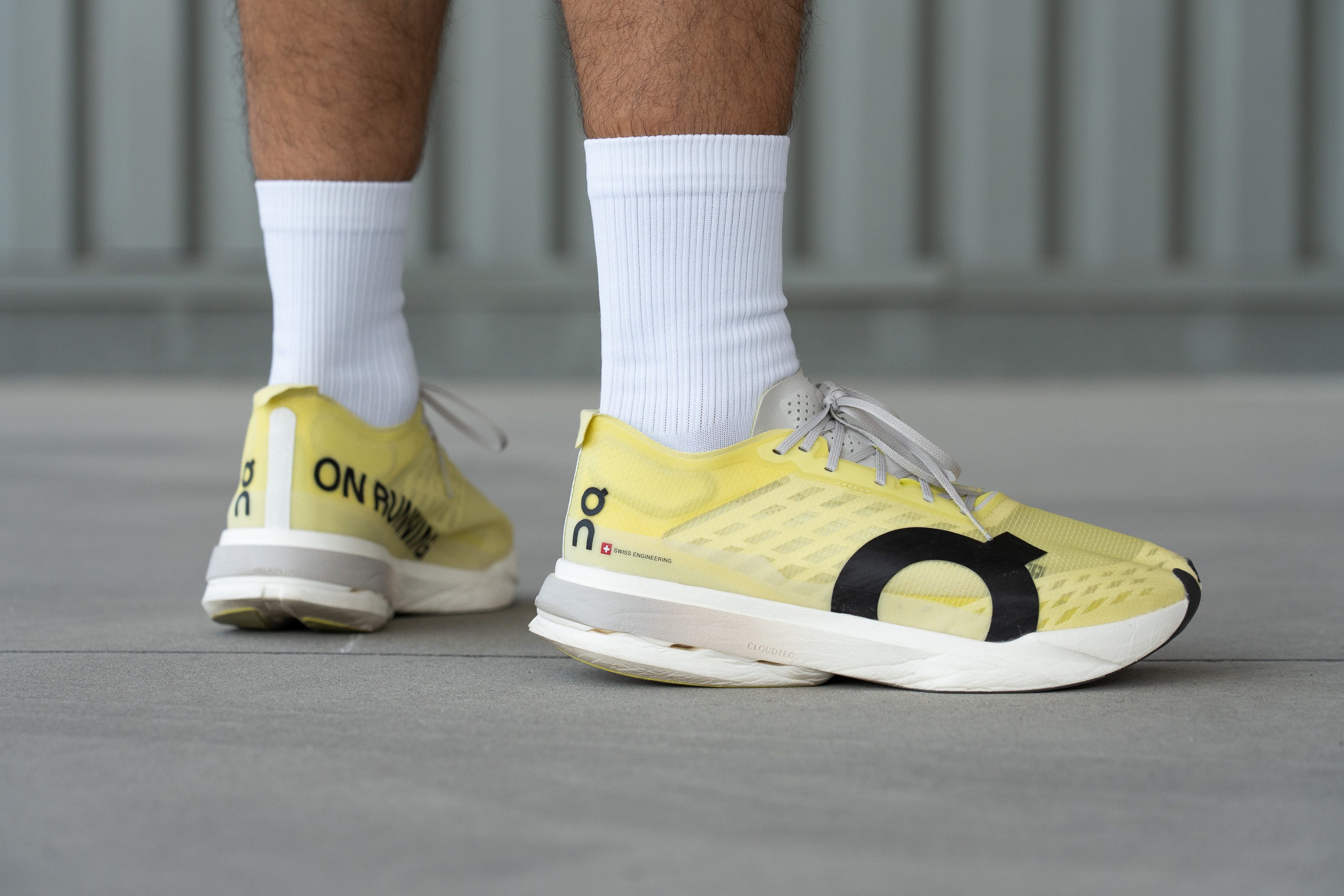
Who should NOT buy
We believe the low drop makes the Cloudboom Strike a poor match for heel strikers, who may feel their stride is less smooth than expected. In our view, forefoot and midfoot strikers will benefit more, but for heel-first landings, we suggest the Nike Vaporfly 4 or the Saucony Endorphin Elite 2.
We also think runners who need even moderate stability in a supershoe should look elsewhere. Based on our findings, the Nike Alphafly 3 and Adidas Adizero Adios Pro 4 deliver a more planted, secure ride while offering similar or even better running efficiency.
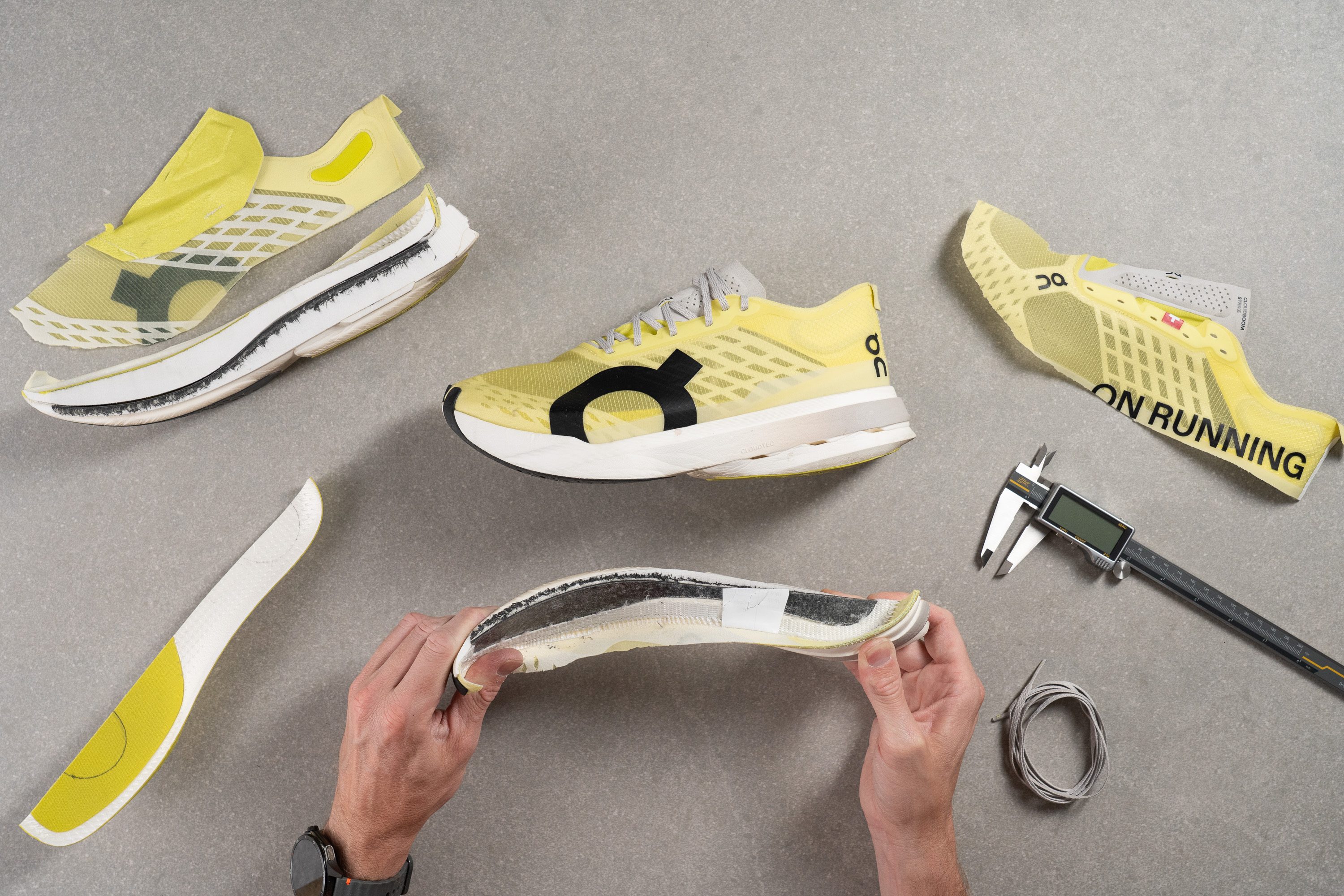
Cushioning
Shock absorption
As expected from a supershoe, shock absorption is outstanding, and that's exactly what you need for long-distance racing. This is a crucial factor for half marathons and especially marathons, helping your legs stay fresher during the decisive final miles.
Our ASTM F1976 test returned 139 SA in the heel and 127 SA in the forefoot.
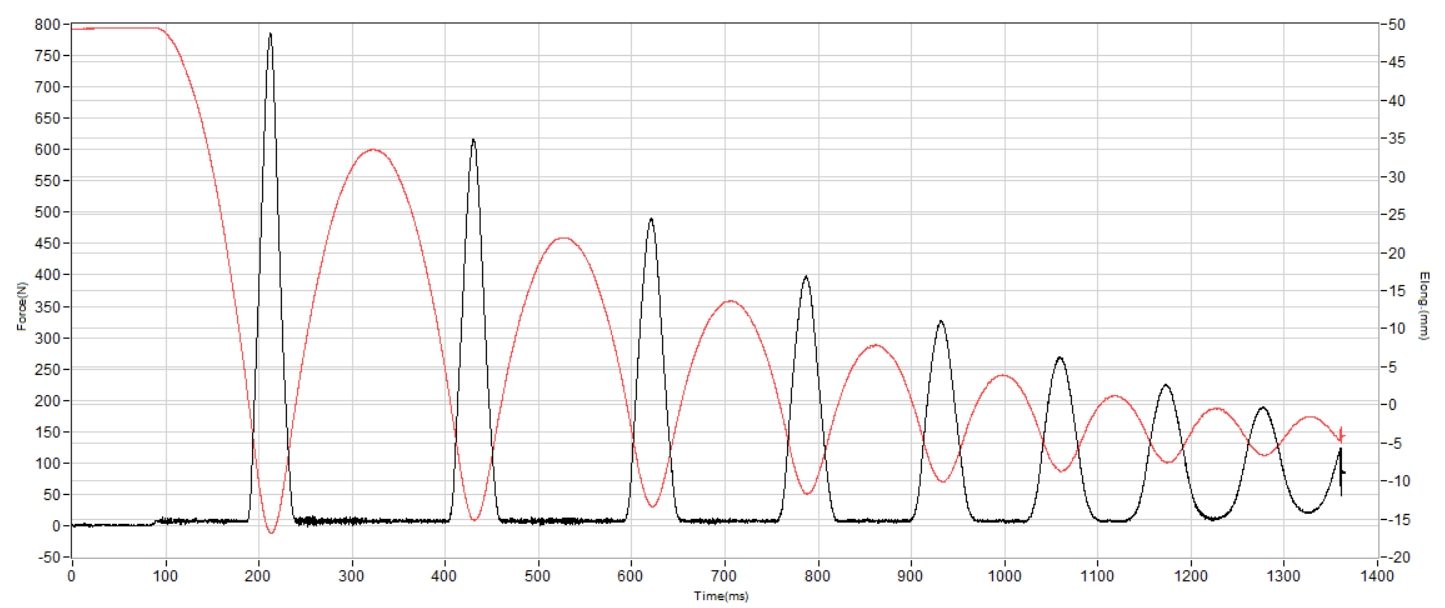
| Cloudboom Strike | 139 SA |
| Average | 129 SA |
Energy return
The On Cloudboom Strike delivers on the most important requirement for a supershoe: world-class energy return.
In our tests, it returned 72.1% in the heel and 73.4% in the forefoot. Both rank among the top performers in running shoes, though still slightly behind supershoes like the Saucony Endorphin Elite 2, which remains the best option if maximum bounce is your priority.
| Cloudboom Strike | 72.1% |
| Average | 58.5% |
Heel stack
In our opinion, a key requirement for a modern supershoe is to get as close as possible to the 40 mm limit, and On delivered. They officially list 39.5 mm at the heel for World Athletics compliance, and our measurement was very close at 38.1 mm—well within normal manufacturing tolerances and ideal for marathon distances.
Oh, and yes, the CloudTec system is still here, but now it feels more like a gimmick to keep the concept alive and it's much smaller than in shoes like the On Cloudsurfer 2. In terms of performance, it has never delivered meaningful benefits, and it’s no surprise that On continues to scale it down in their performance-focused shoes.
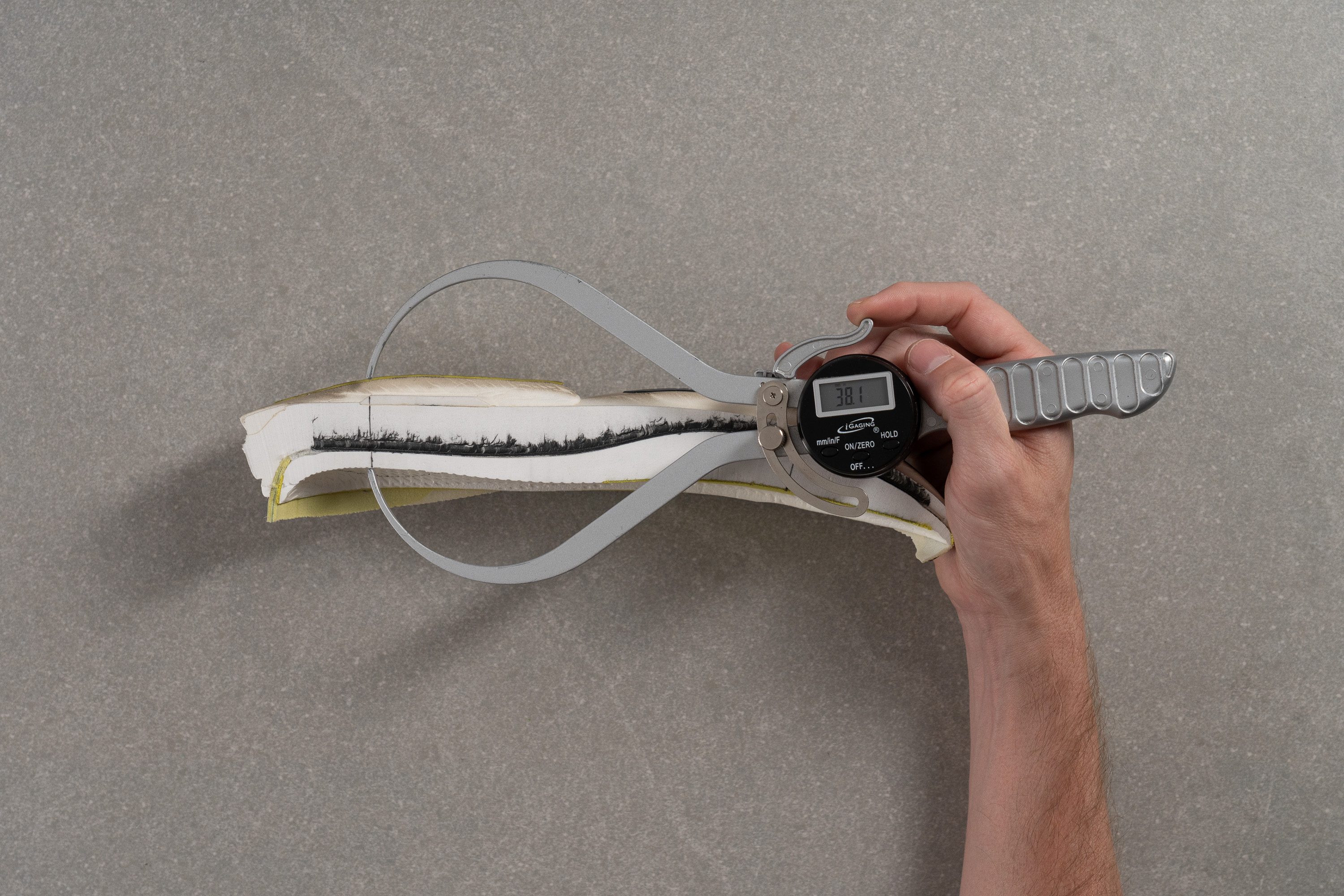
| Cloudboom Strike | 38.1 mm |
| Average | 34.8 mm |
Forefoot stack
The On Cloudboom Strike is a dream for forefoot strikers who want maximum foam underfoot. With 34.9 mm of cushioning, it even surpasses the ASICS Metaspeed Sky Paris!
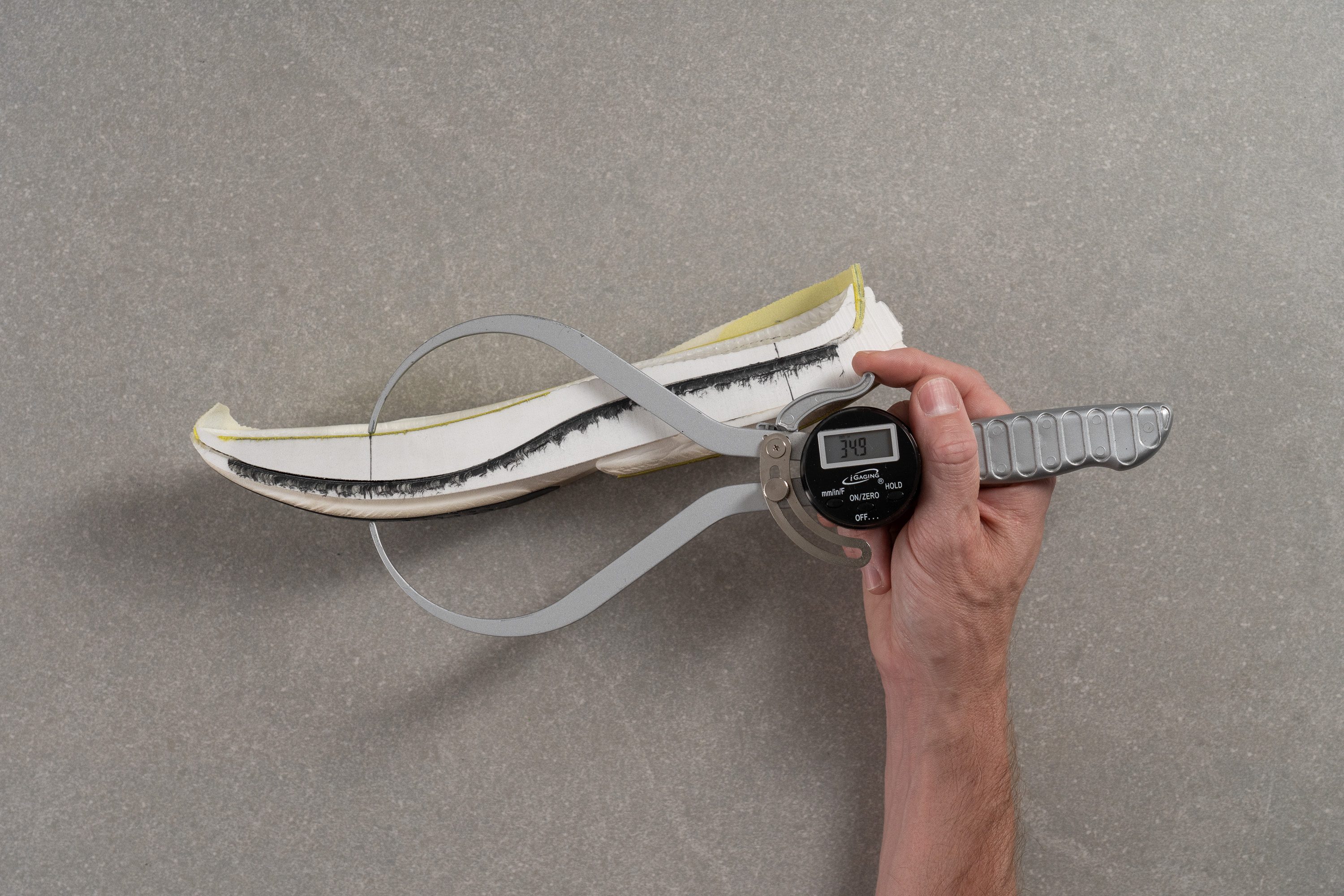
| Cloudboom Strike | 34.9 mm |
| Average | 26.2 mm |
Drop
The On Cloudboom Strike is an excellent choice for forefoot and midfoot strikers seeking a competition shoe with low drop. Its 3.2 mm offset encourages landing on the front half of the foot, making full use of the generous stack height up front.
Heel strikers can still run in it, but with so many high-drop supershoes available, we believe there are better options for them.
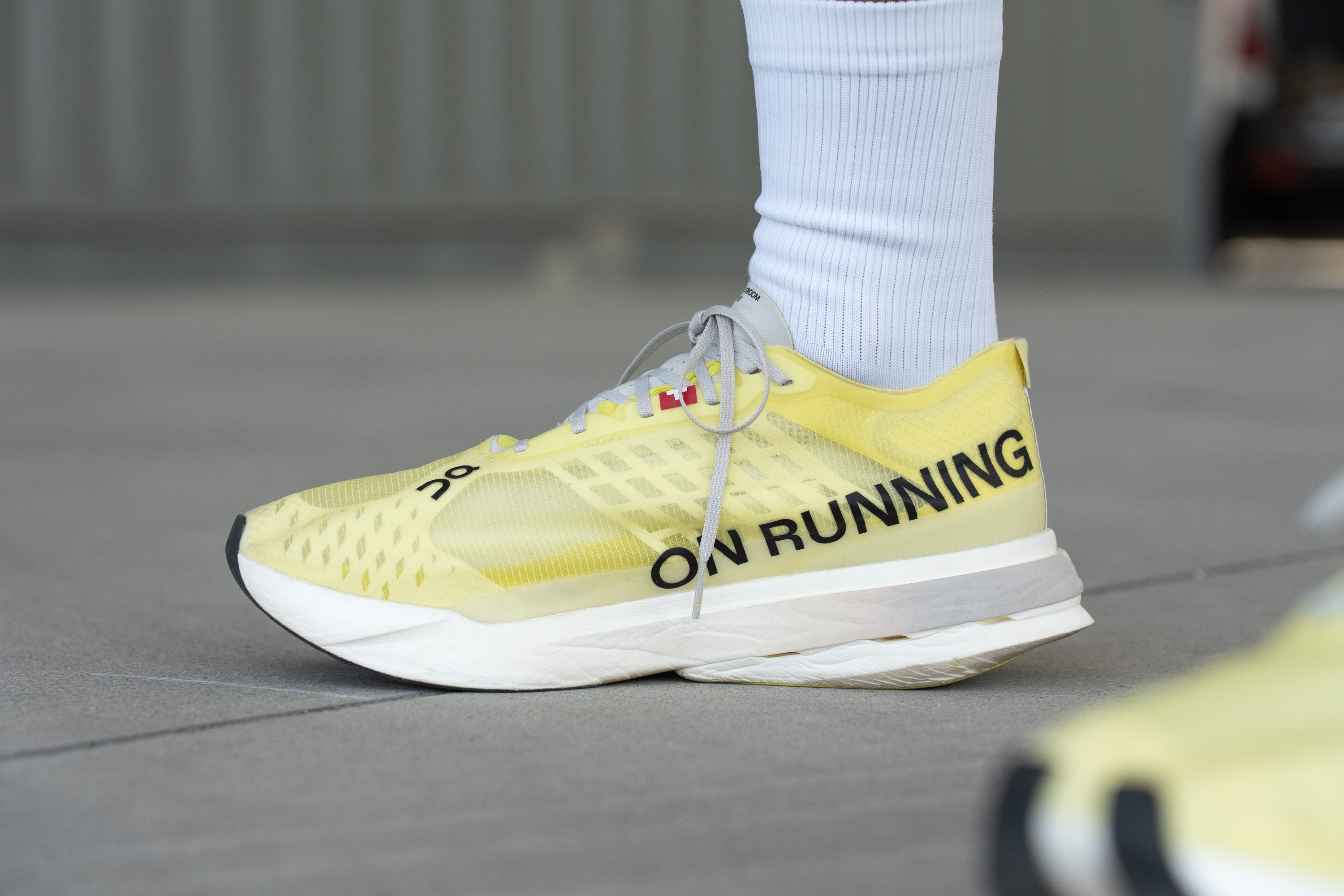
| Cloudboom Strike | 3.2 mm |
| Average | 8.6 mm |
Midsole softness
The secret behind the Cloudboom Strike’s impressive energy return lies in its Helion HF foam. This Pebax-based material, similar to ZoomX, offers a ride that leans slightly toward the softer side, though not enough to be considered plush.
Our durometer measured 16.9 HA in the bottom layer, the one in direct contact with the ground. Next, let’s examine the layer positioned above the plate.

| Cloudboom Strike | 16.9 HA |
| Average | 20.4 HA |
Secondary foam softness
We discovered that the secondary layer of foam is unique compared to its rivals. To boost the effect of Helion HF and remove the need for a standard insole, On combined both layers into a single slab of Pebax that works as insole and midsole above the plate.
This firmer layer measures 24.4 HA, designed to apply maximum force over the plate, which explains why the shoe didn't feel plush during our runs.

| Cloudboom Strike | 24.4 HA |
| Average | 22.7 HA |
Rocker
From the side profile in the image, we can see that the On Cloudboom Strike’s rocker is quite subtle compared to other supershoes like the Hoka Cielo X1 2.0. The forefoot doesn’t have an aggressive upward curve, meaning there’s less of that rolling sensation that helps guide you from midstance into toe-off.
This kind of geometry is another strong indication that the shoe is best suited for midfoot and forefoot strikers. Without a pronounced front rocker, heel strikers won’t get as much help transitioning forward.
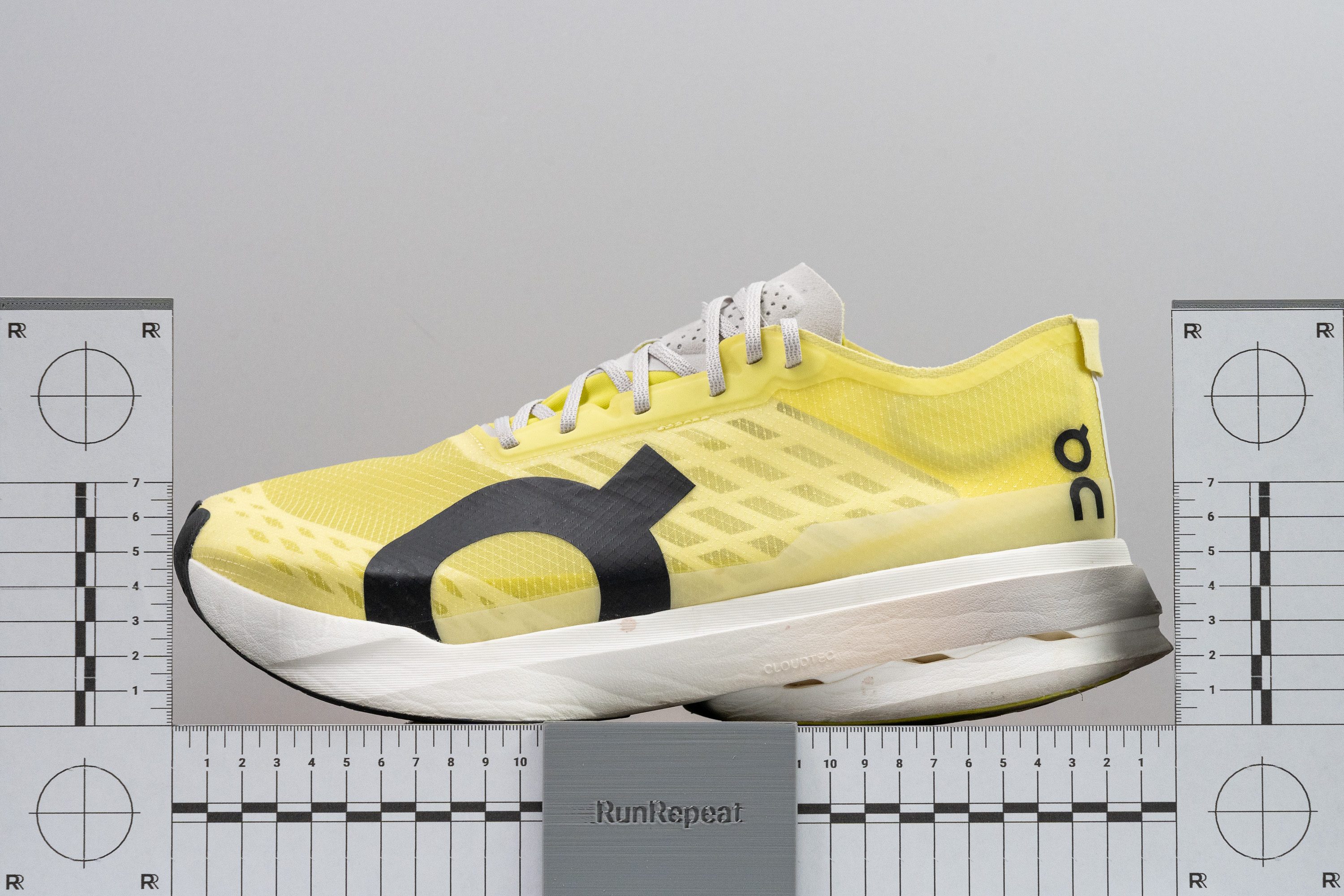
Plate
We found that the On Cloudboom Strike avoids any plate experiments, sticking instead to the proven formula since 2017: a full-length carbon plate with a spoon-like curve from the midfoot to the forefoot.
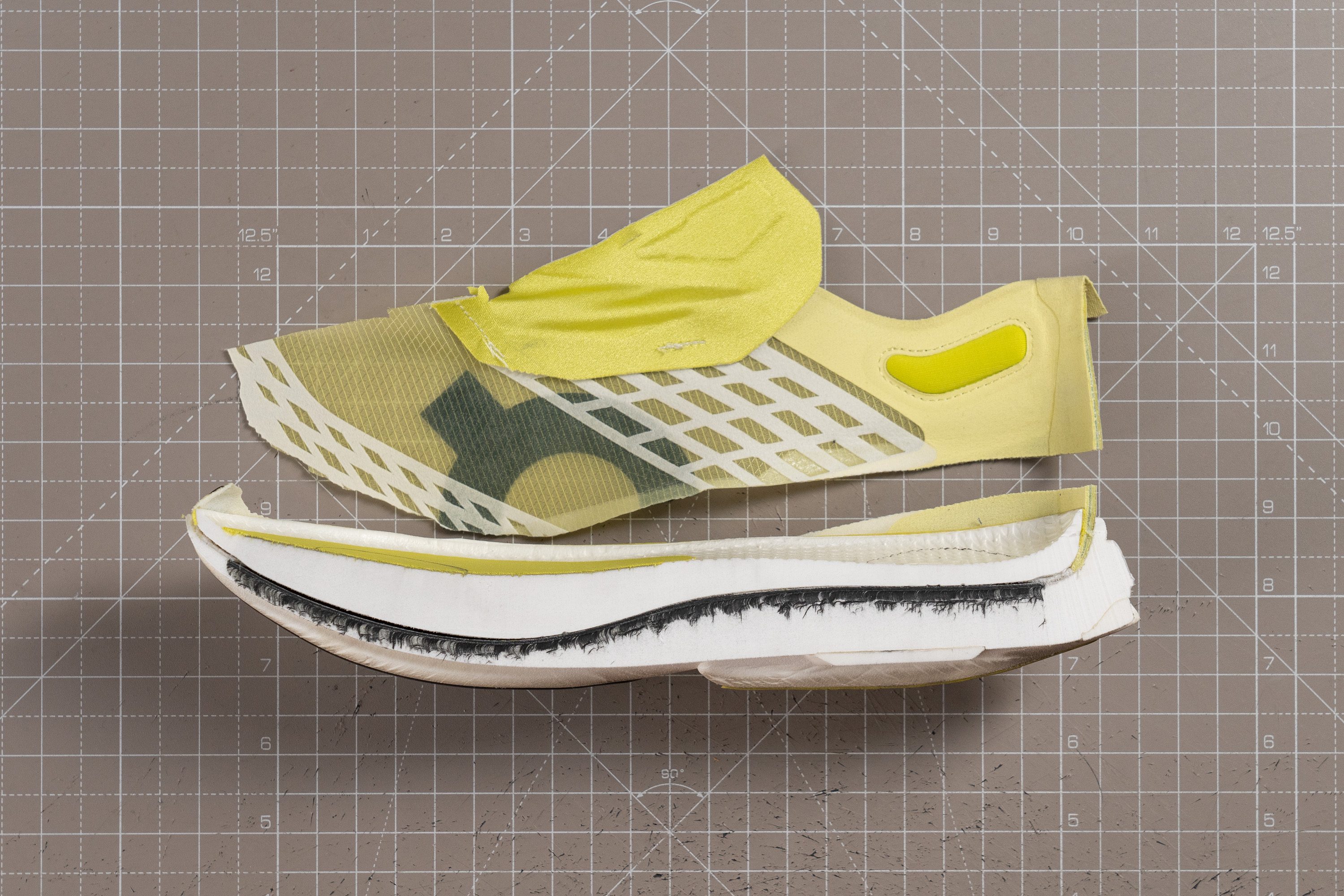
Size and fit
Size
On Cloudboom Strike fits true to size (31 votes).
Width / Fit
One of the biggest drawbacks of On’s previous supershoe, the Cloudboom Echo 3, was its ultra-tight fit that worked well just for runners with narrow feet. To see if this had been fixed, we created a gel mold of the shoe.
After letting it set in the refrigerator, we found it is now much roomier than before. The first measurement jumped from 70.4 mm in the Echo 3 to a more average 95.6 mm in the Strike.
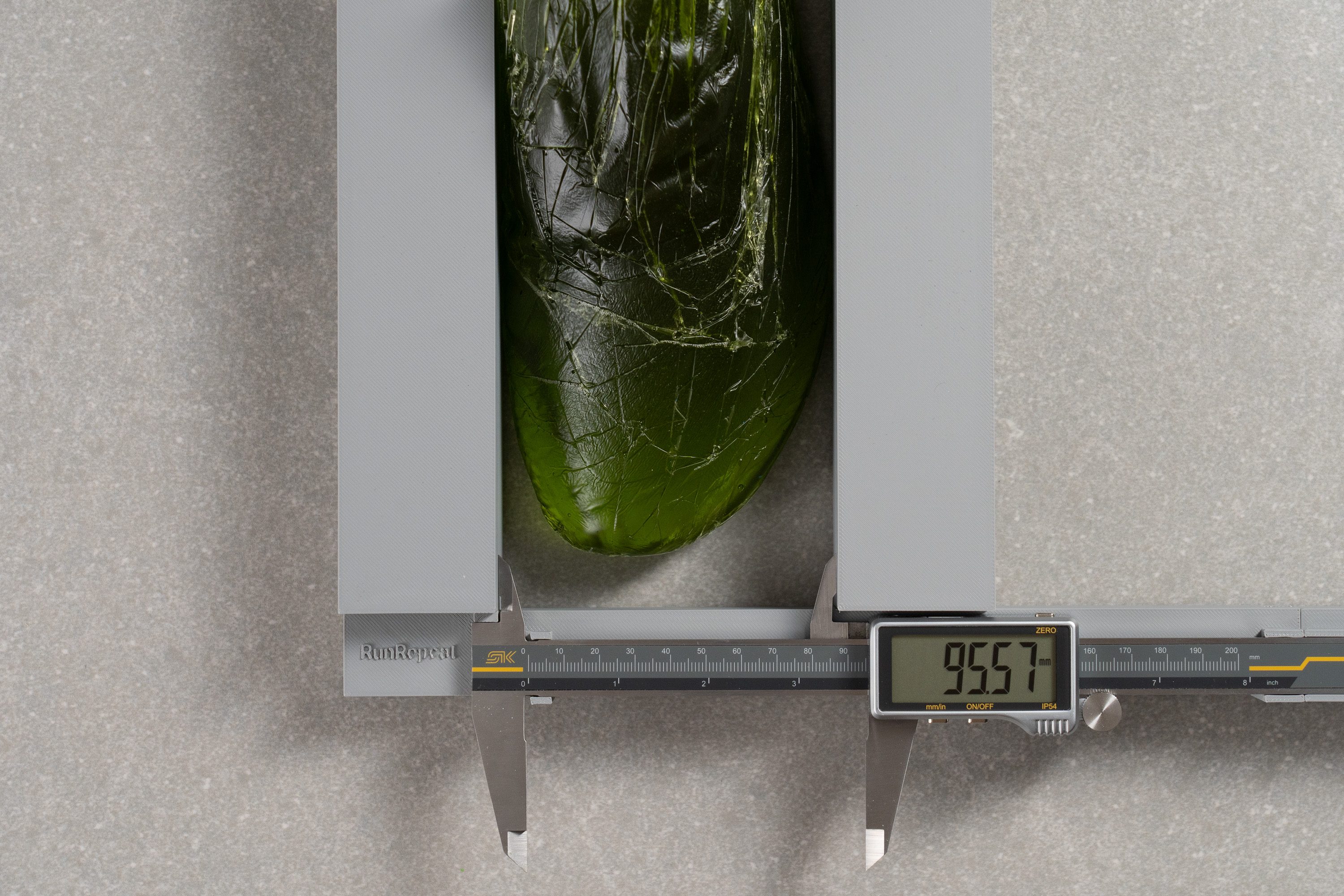
| Cloudboom Strike | 95.6 mm |
| Average | 95.1 mm |
Toebox width
The entire upper has become roomier. Our second measurement came in at 73.4 mm, similar to many daily trainers, compared to the previous 70.4 mm.
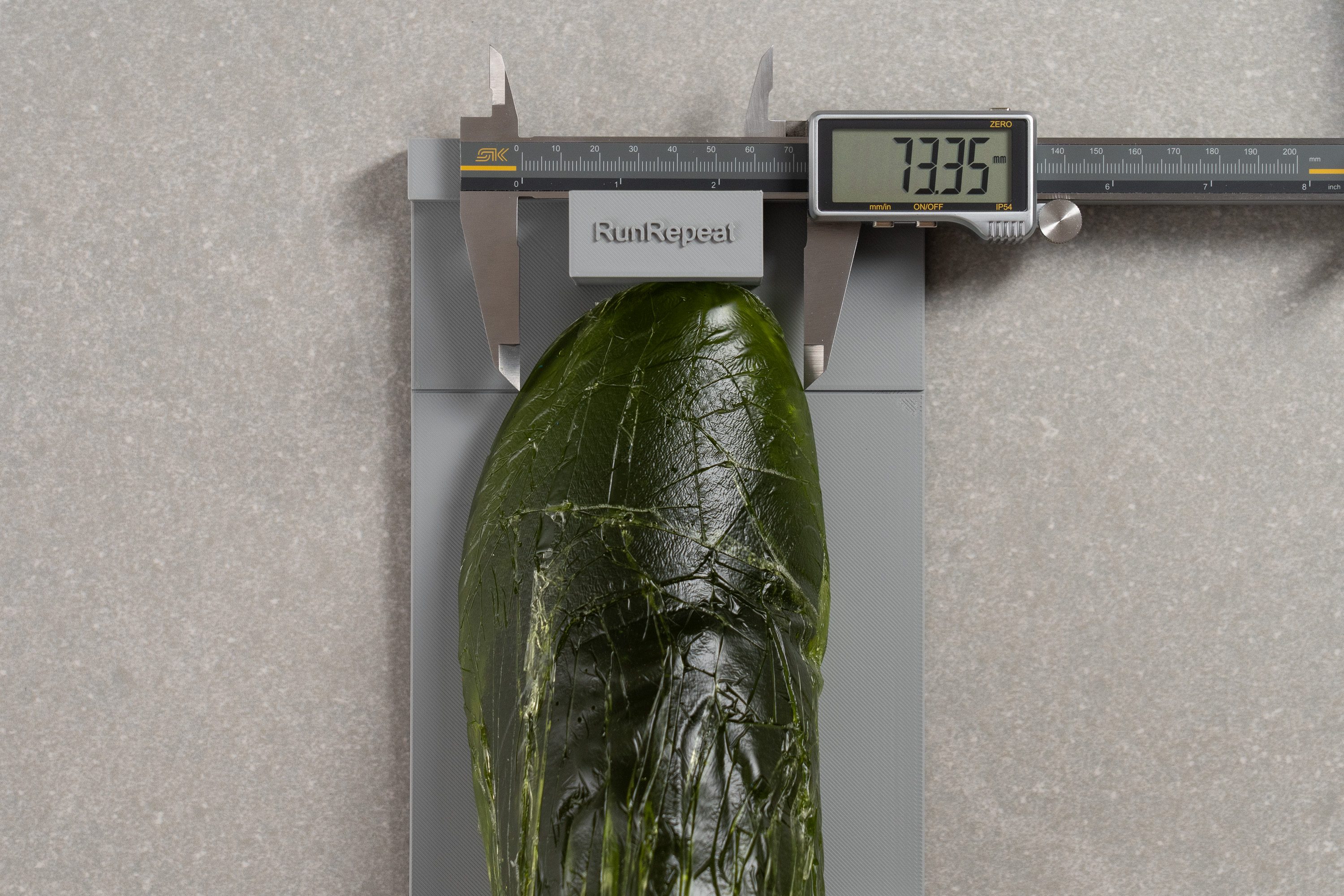
| Cloudboom Strike | 73.4 mm |
| Average | 73.2 mm |
Toebox height
The toebox height meets the comfort standard with a 27.2 mm measurement.
While this might not matter much for a short interval session or a 10K, during a marathon, having extra room for your toes to expand becomes essential.
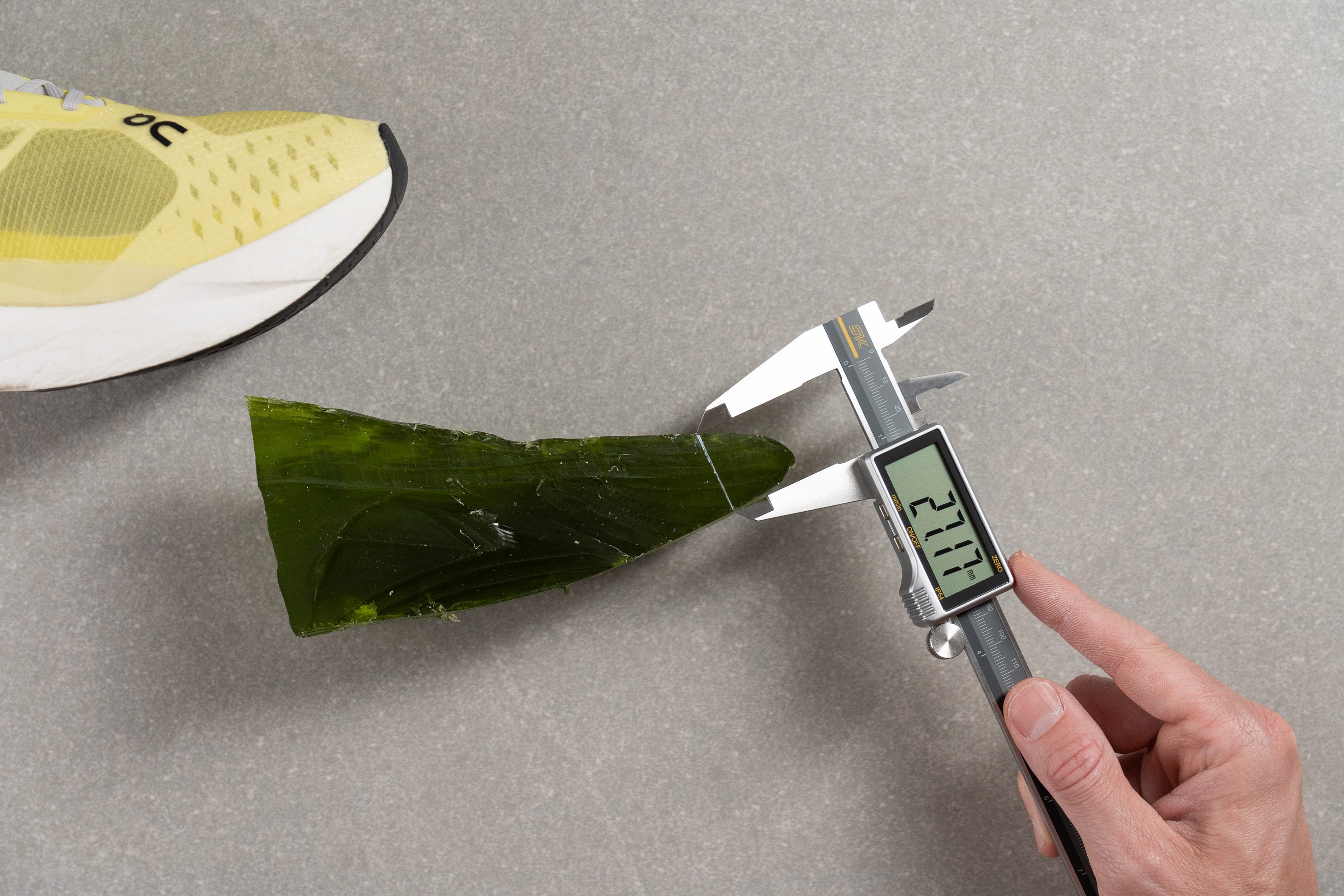
| Cloudboom Strike | 27.2 mm |
| Average | 27.1 mm |
Traction / Grip
Traction test
Traction scored an impressive 0.62 in our test, outperforming even shoes with Continental rubber like the Adidas Adizero Adios Pro 3, and delivering excellent grip in both dry and wet conditions, including on the track.
| Cloudboom Strike | 0.62 |
| Average | 0.48 |
Outsole design
We discovered that the outsole of the On Cloudboom Strike combines two main rubber sections at the heel and forefoot, both using a thin yet grippy compound. These areas feature diamond-shaped cutouts that reveal the midsole foam beneath, reducing weight and allowing slight compression.
The exposed foam through the midfoot is uninterrupted, framed by a narrow central channel. However, it offers some of the most extensive outsole coverage among supershoes, making it an excellent choice for runners concerned about exposed foam.
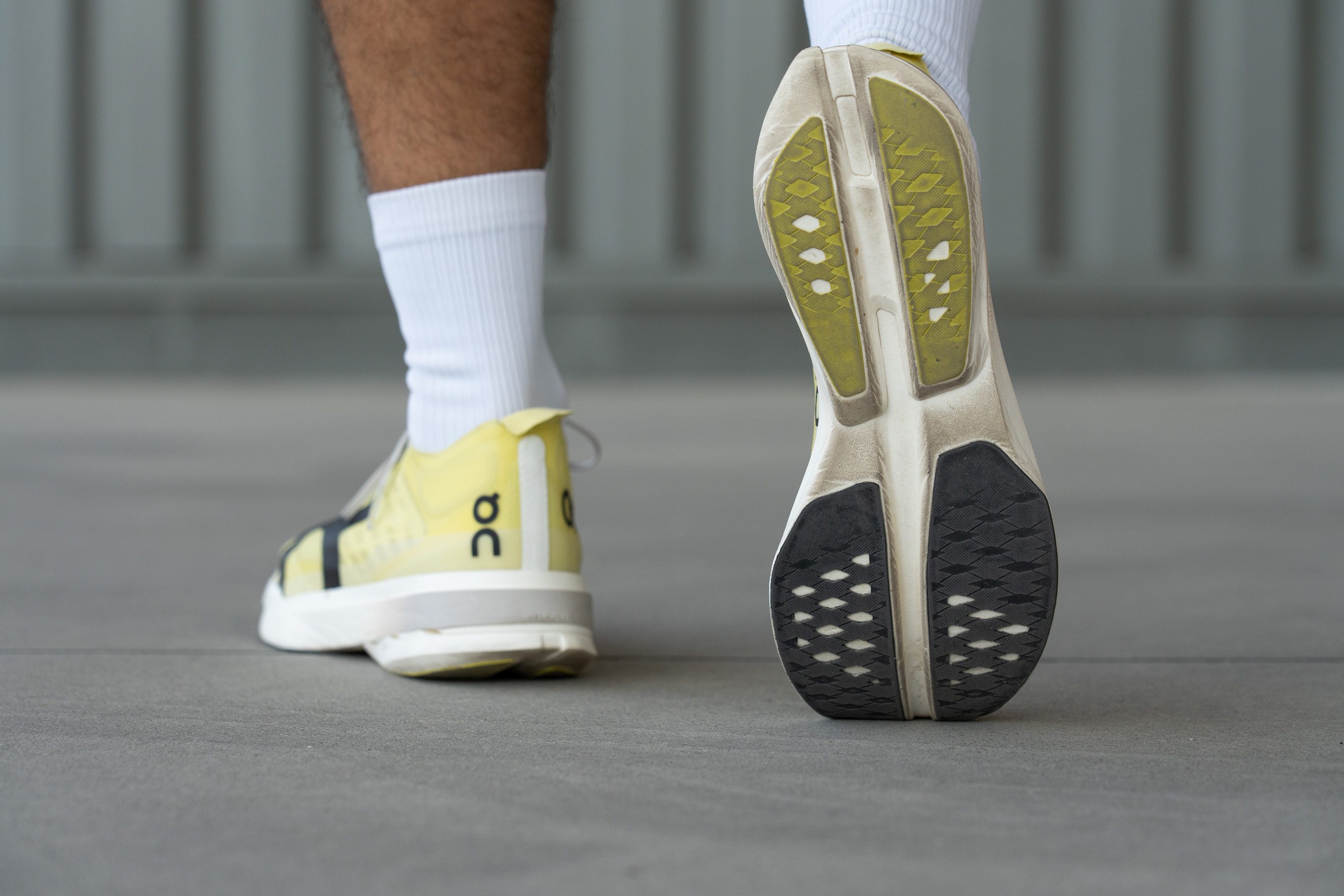
Flexibility / Stiffness
Shoes with carbon plates typically resist bending, and in our 30-degree test, the Cloudboom Strike required 17.8N to flex. This is a notable difference from its predecessor, which measured 22.0N and was clearly a stiffer shoe.
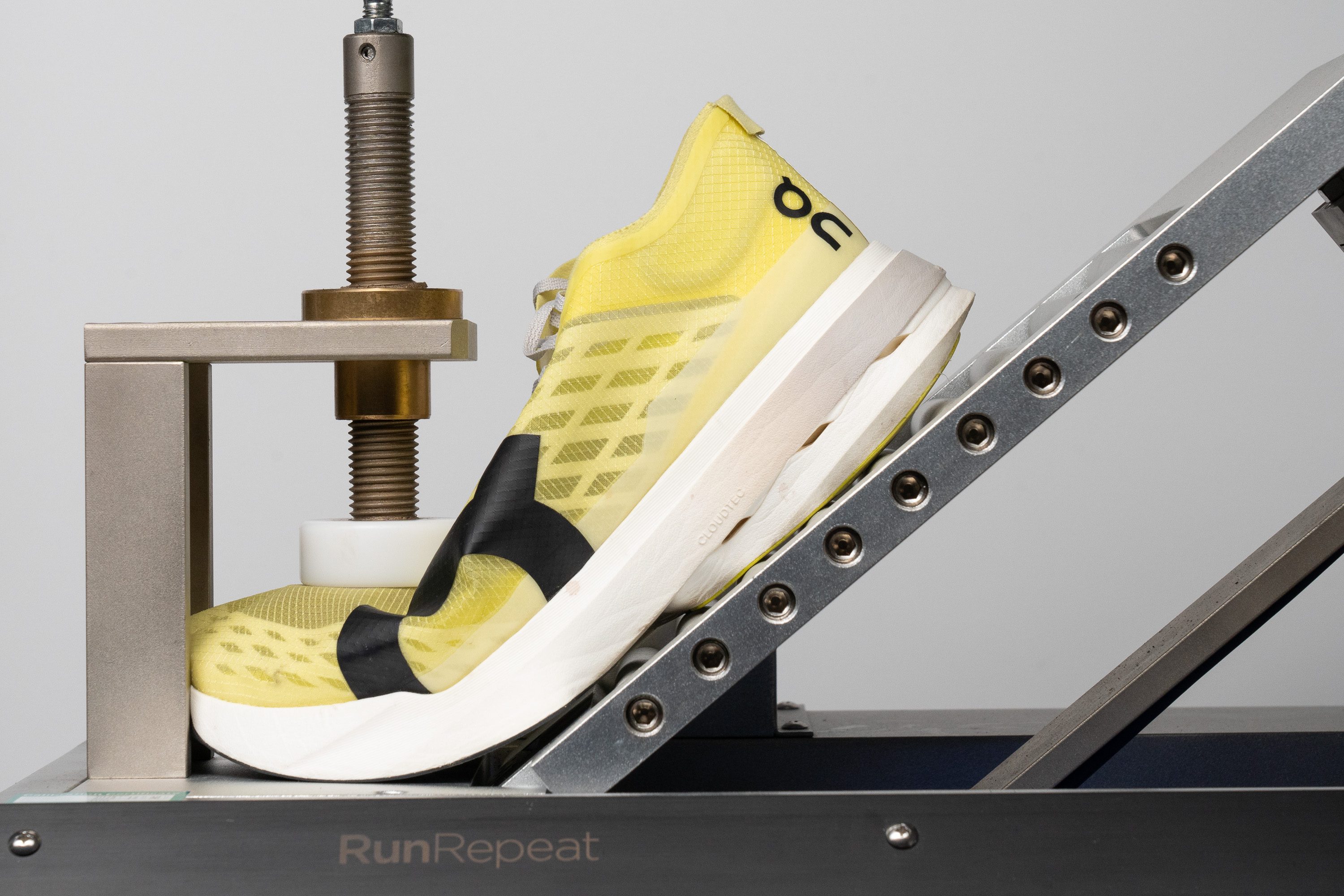
| Cloudboom Strike | 17.8N |
| Average | 15.3N |
Weight
Any supershoe released today needs to be around 7 ounces or 200g at most to stay competitive against the latest models from brands like Nike or ASICS.
The On Cloudboom Strike sits right on that limit at 7.1 oz (201g). We can’t complain, especially with its low drop adding foam to the forefoot, though trimming about 10% of the weight would be ideal for version 2.
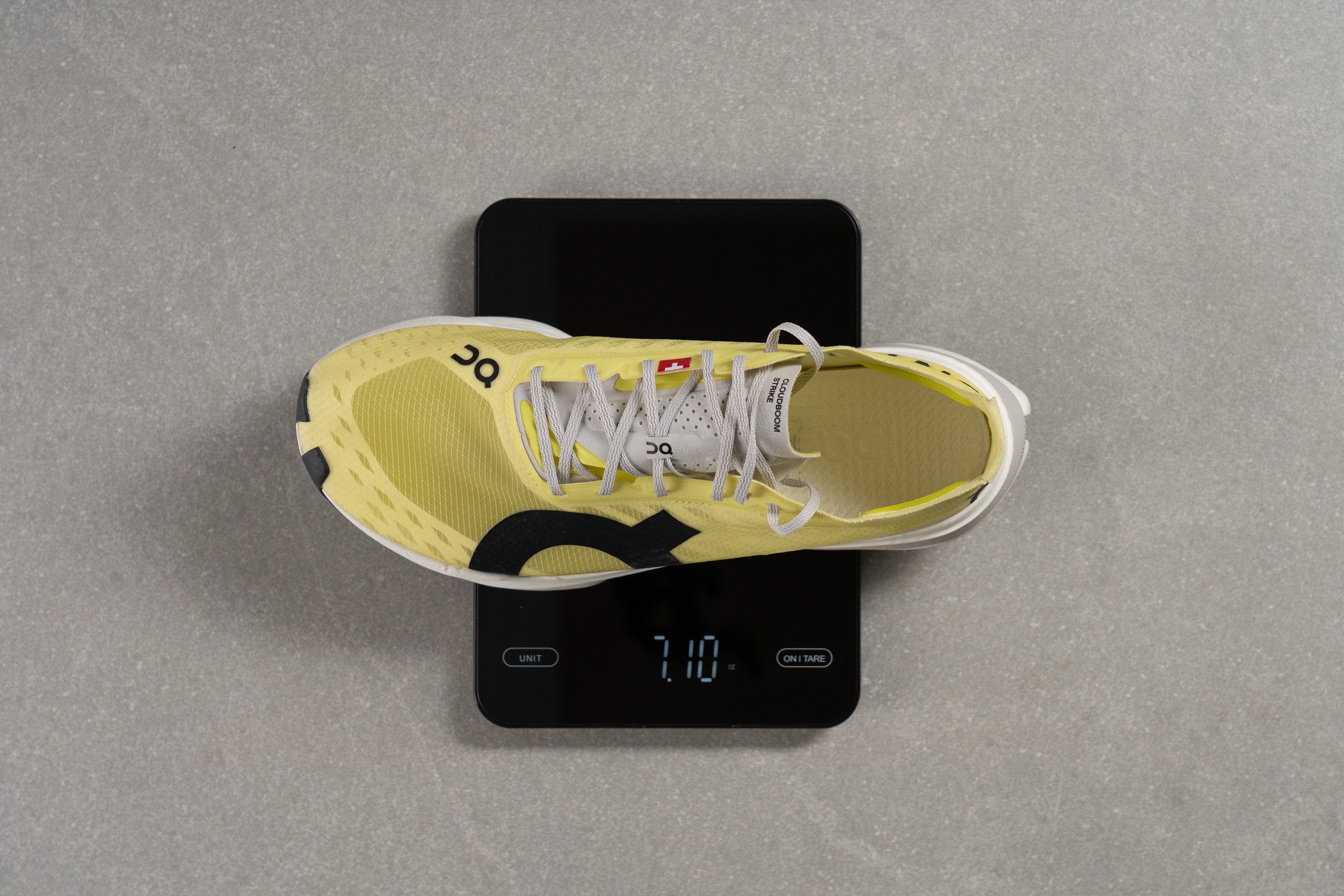
| Cloudboom Strike | 7.1 oz (201g) |
| Average | 9.3 oz (264g) |
Breathability
The upper of the Cloudboom Strike shows that On has pushed the limits of thinness.
This has a big impact on ventilation. Even without dedicated ventilation holes, airflow is excellent, earning a 4/5 on our scale and making it marathon-ready.
The mesh is so thin that shining a light through it is striking. We also appreciated the subtle midfoot reinforcement, which adds stability without restricting airflow in that area.

After examining hundreds of uppers in the lab, this one stands out for its precision. Under the microscope, the detail is fascinating.

Comfort features are minimal. The tongue is ultra-thin, and there’s only a small piece of foam at the ankle, leaving the heel without padding.
This won’t suit everyone, as unpadded Achilles areas can sometimes cause heel slippage.
| Cloudboom Strike | 4 |
| Average | 3.7 |
Stability
Lateral stability test
After testing it to the limit, we can confirm that the On Cloudboom Strike is only suited for neutral runners. Its midsole is not as broad as in some other racing shoes, keeping it agile but requiring solid running technique, especially for heel strikers.
Torsional rigidity
We found that the carbon-fiber plate, positioned between two foam layers, creates an ultra-rigid, race-focused structure. Naturally, it scored a perfect 5 out of 5 in this test.
| Cloudboom Strike | 5 |
| Average | 3.5 |
Heel counter stiffness
The heel counter has no embedded reinforcement and lacks any foam, making it as flexible as possible and providing no added stability. A clear 1/5.
| Cloudboom Strike | 1 |
| Average | 2.9 |
Midsole width - forefoot
We mentioned earlier that this is far from a wide supershoe, quite the opposite. We appreciate that, as part of the charm of a racing shoe is feeling a bit wild and raw. Variety in the market lets runners choose based on preference.
Here, the forefoot measured an average 114.1 mm, and with the massive stack height, it demands solid running form.
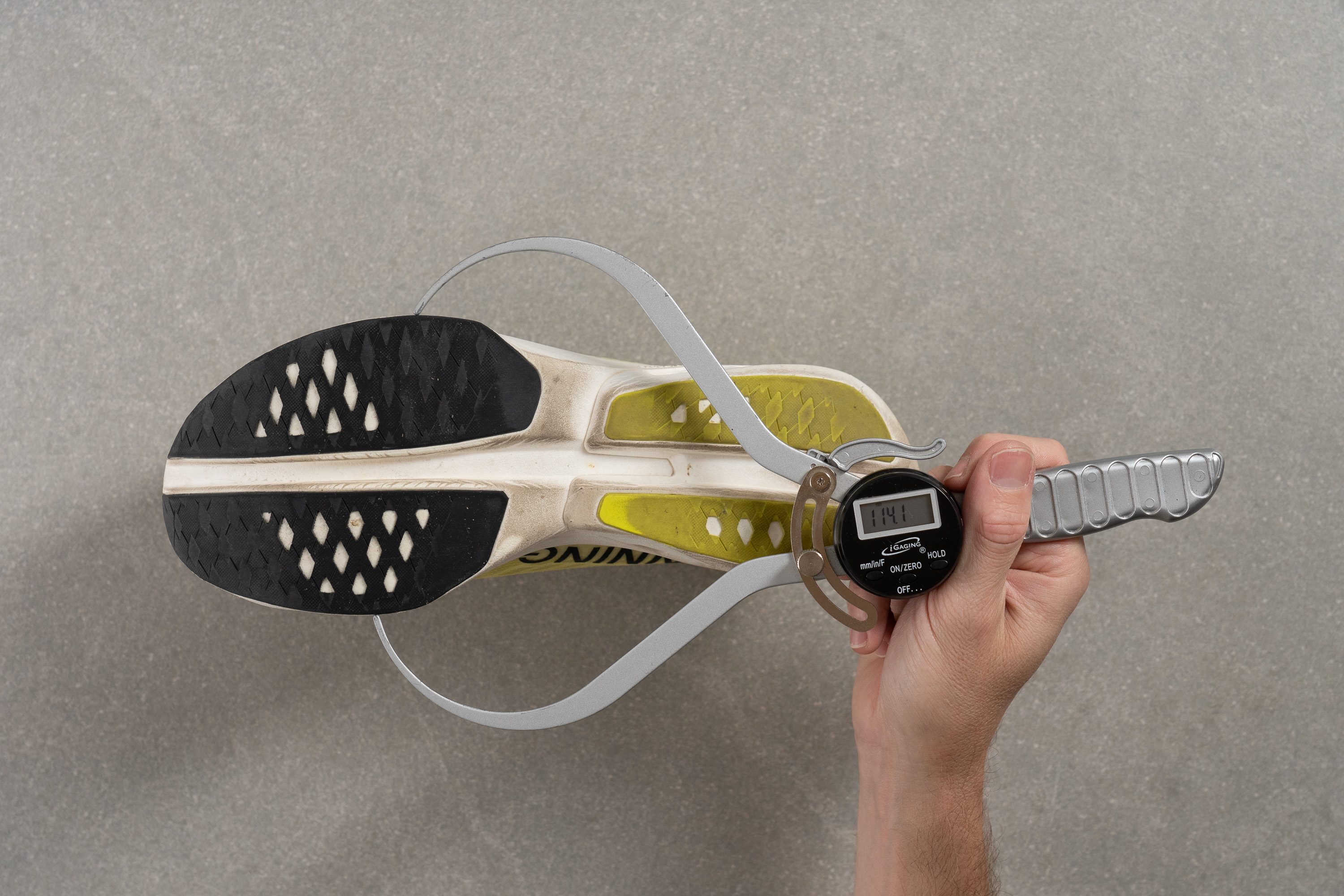
| Cloudboom Strike | 114.1 mm |
| Average | 114.4 mm |
Midsole width - heel
The heel measures just 84.8 mm, and when paired with the low heel-to-toe drop, it reinforces our view that this is not the ideal supershoe for heel strikers.
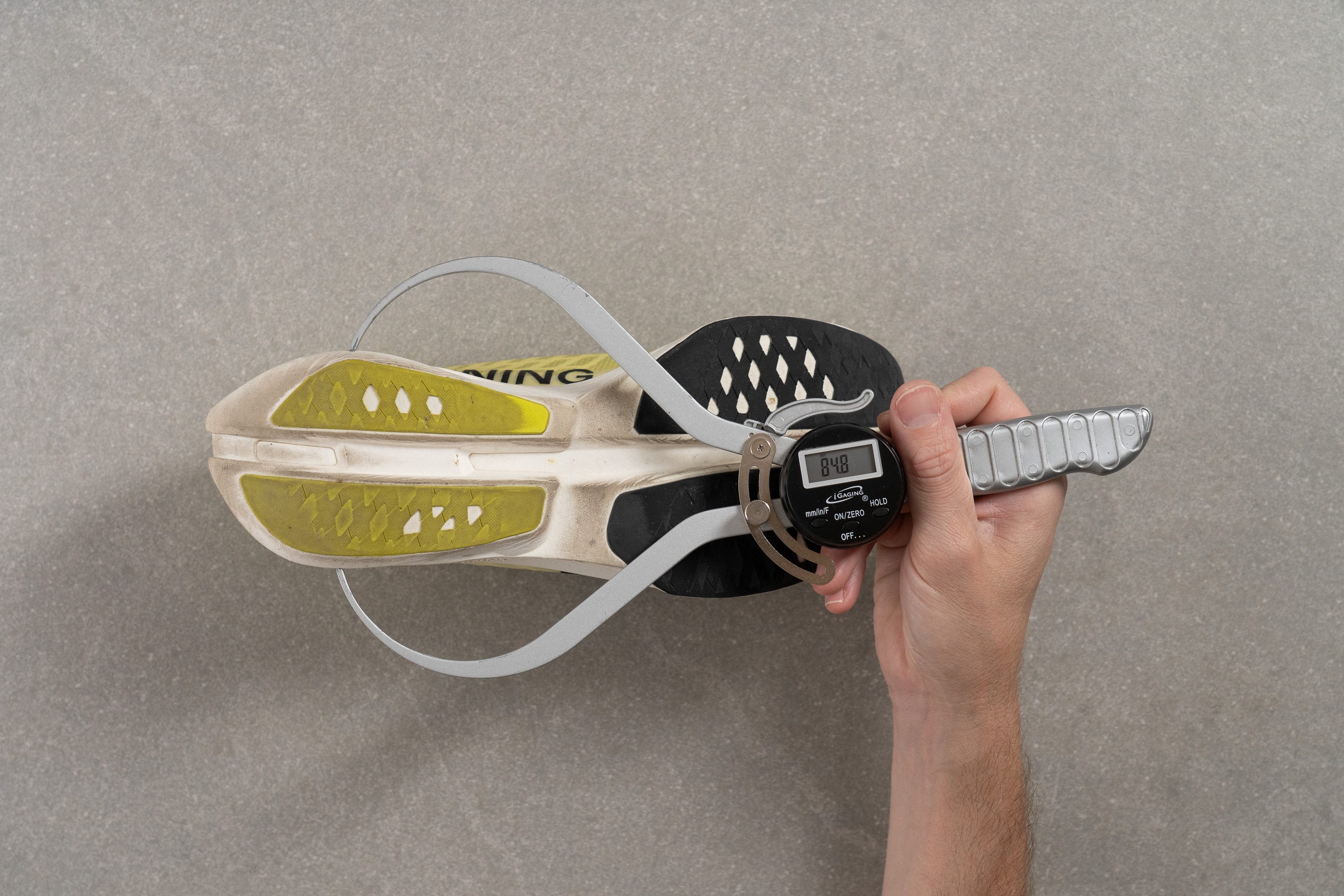
| Cloudboom Strike | 84.8 mm |
| Average | 90.7 mm |
Durability
Toebox durability
Life is full of trade-offs, and running shoes are no exception. When you use a razor-thin upper with excellent lightness and breathability, poor durability is expected. That’s exactly what we found, with a low 1/5 score that comes as no surprise.
| Cloudboom Strike | 1 |
| Average | 2.6 |
Heel padding durability
The heel padding benefits from its lack of foam, achieving a solid 4/5 score.
| Cloudboom Strike | 4 |
| Average | 3.4 |
Outsole durability
The outsole performed well in our Dremel test, with only 1.0 mm of foam removed. That’s about average, but considering racing shoes often use soft rubber—similar to Formula 1 tires—for better grip, combining this with good durability isn’t common. Yet that’s exactly what we found here.
| Cloudboom Strike | 1.0 mm |
| Average | 1.1 mm |
Outsole thickness
The rubber measures 1.6 mm in thickness. While this shoe won’t match the mileage of an average daily trainer, it should still handle two or three key races plus several hundred kilometers of training afterward.
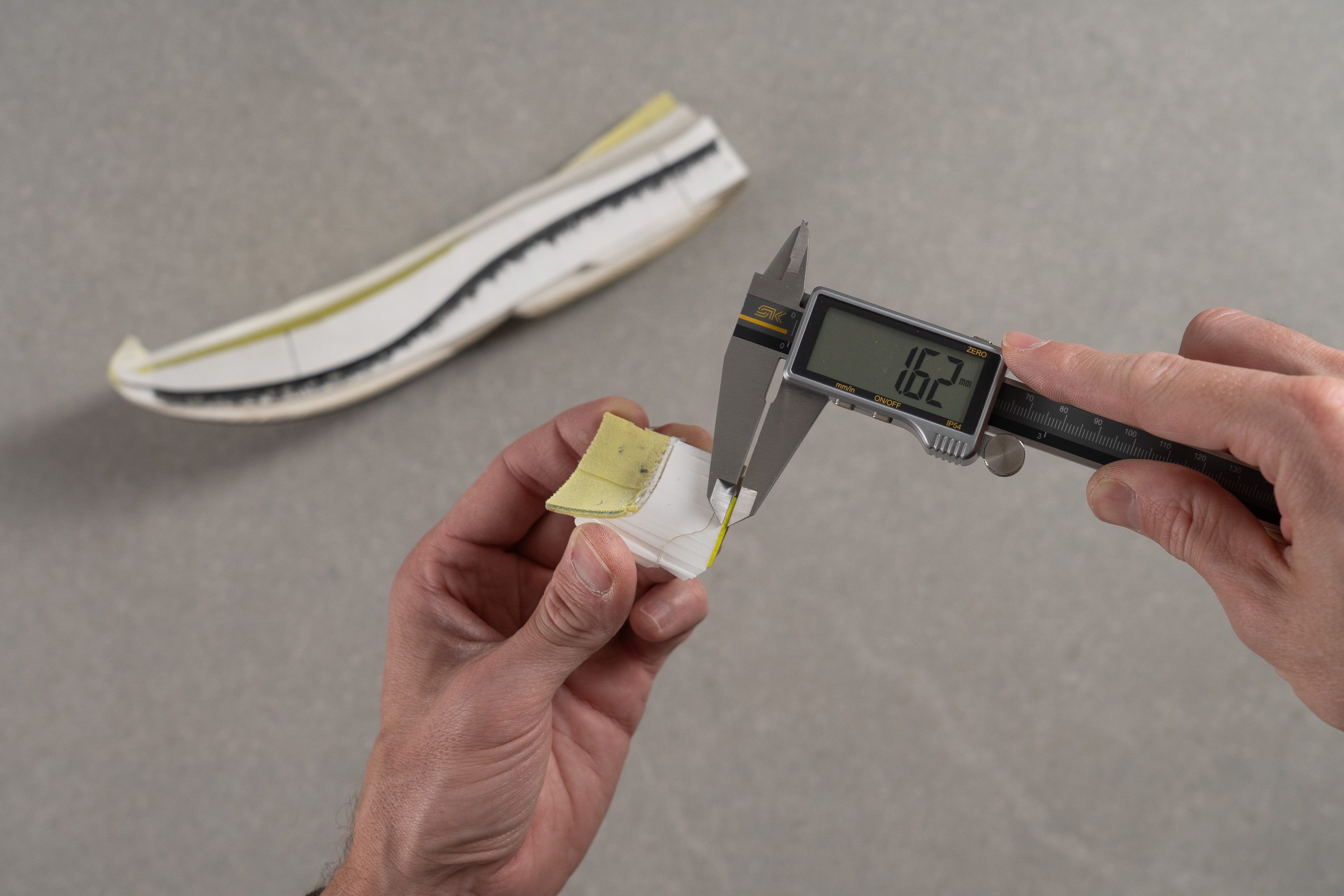
| Cloudboom Strike | 1.6 mm |
| Average | 3.2 mm |
Misc
Insole thickness
The drop-in Pebax insole measures 6.6 mm in the heel, making it slightly thicker than the average insole. However, it changes significantly toward the forefoot, where this unique insole system is the only foam above the plate. We love that On is trying something different from everyone else here!

| Cloudboom Strike | 6.6 mm |
| Average | 4.5 mm |
Removable insole
The insole is removable, but you definitely don’t want to take it out. It provides roughly half of the forefoot cushioning (everything above the carbon plate) and is a crucial component of the shoe.
We initially thought On might release different options—such as softer or firmer Pebax slabs—to tailor the ride for each runner for something like $50, but that hasn’t happened yet.

| Cloudboom Strike | Yes |
Midsole softness in cold (%)
Made from Pebax foam, the Helion HF midsole shows excellent resistance to cold temperatures. In our tests, it became only 6% firmer after 20 minutes in the freezer, which is impressive.
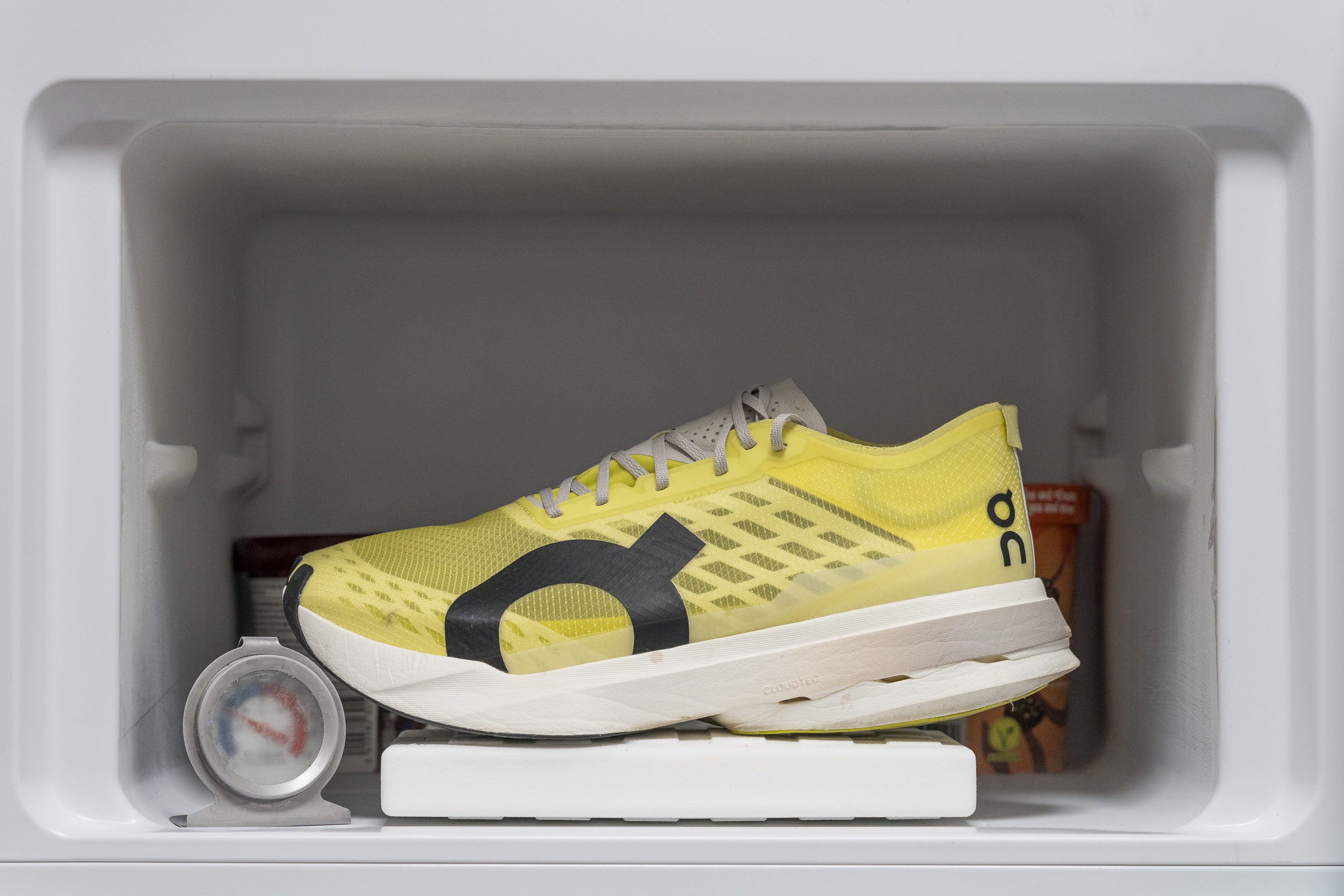
| Cloudboom Strike | 6% |
| Average | 24% |
Reflective elements
We found exactly zero reflective elements in the Cloudboom Strike.
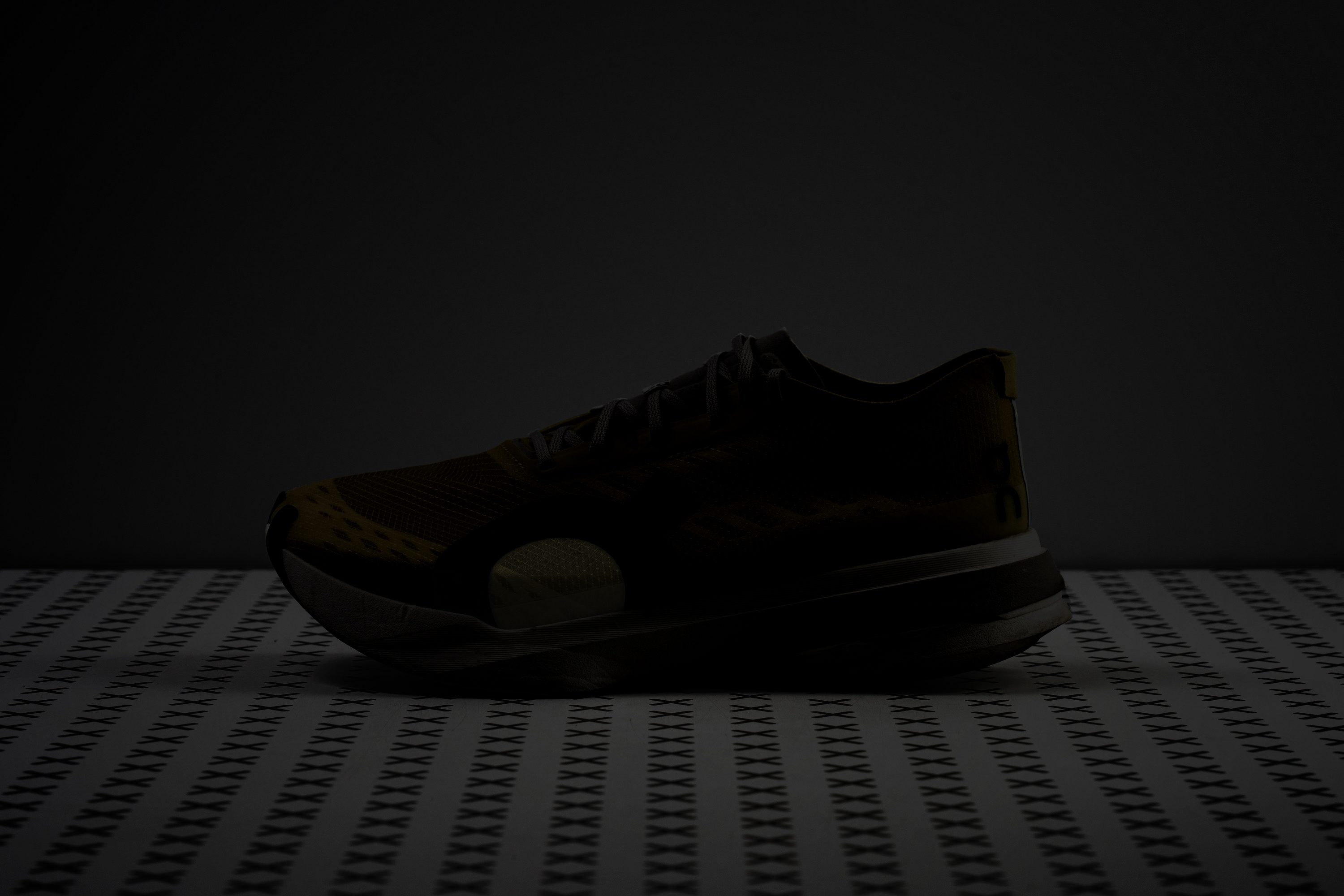
| Cloudboom Strike | No |
Tongue padding
As expected in a shoe where every gram matters, the tongue features an ultra-thin foam layer measuring only 1.2 mm. This demands precise adjustment when putting them on, but it’s exactly what you want in a racing shoe.
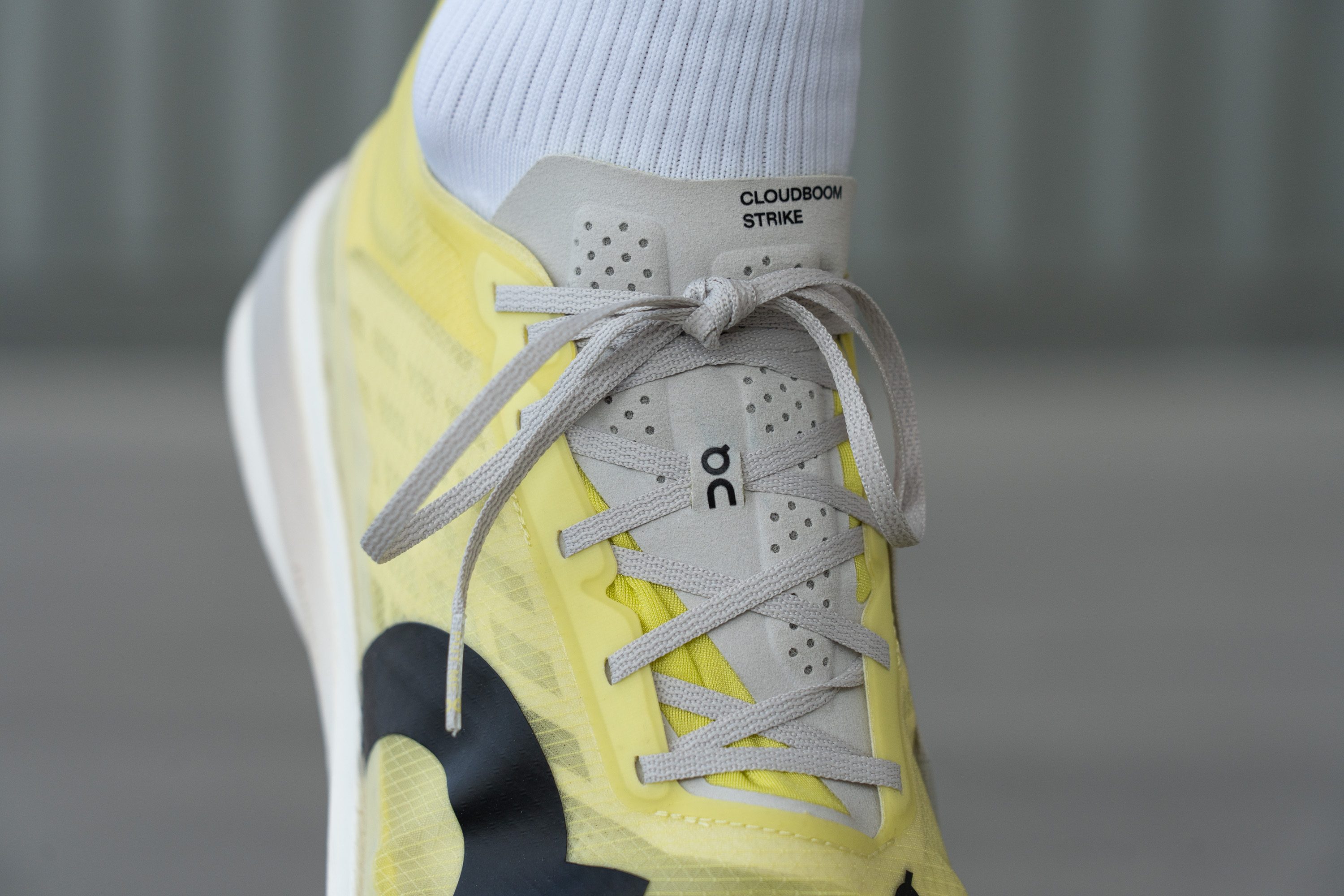
The Strike lacks the textured laces found on many other supershoes, but the ones provided are still high quality. They run through punched eyelets, eliminating the risk of early tearing seen in shoes with loop-based eyelets, and we also loved that the tongue is perforated.
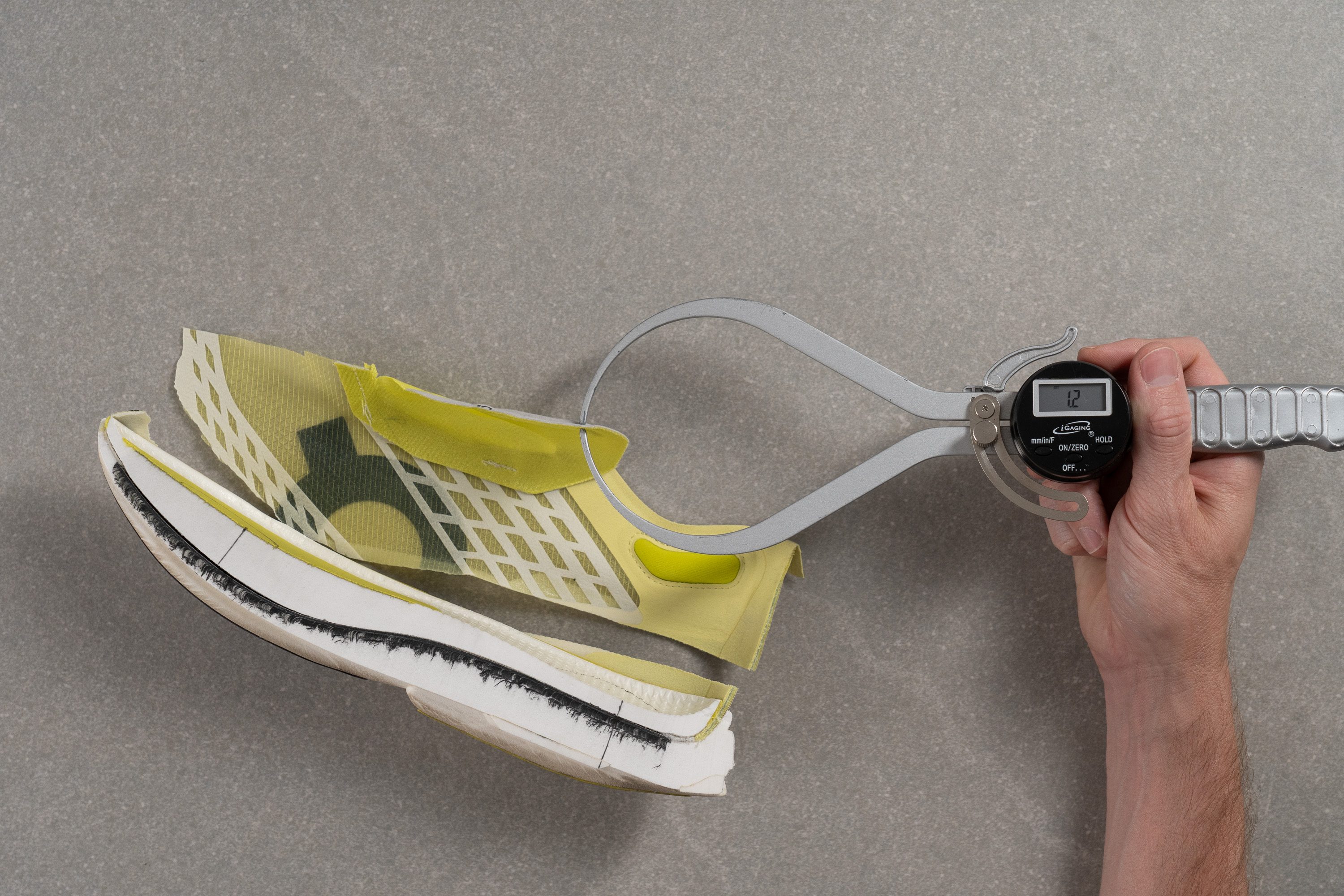
| Cloudboom Strike | 1.2 mm |
| Average | 5.8 mm |
Tongue: gusset type
The tongue is not gusseted, but it is partially stitched into the upper, which should prevent it from shifting sideways for most runners.
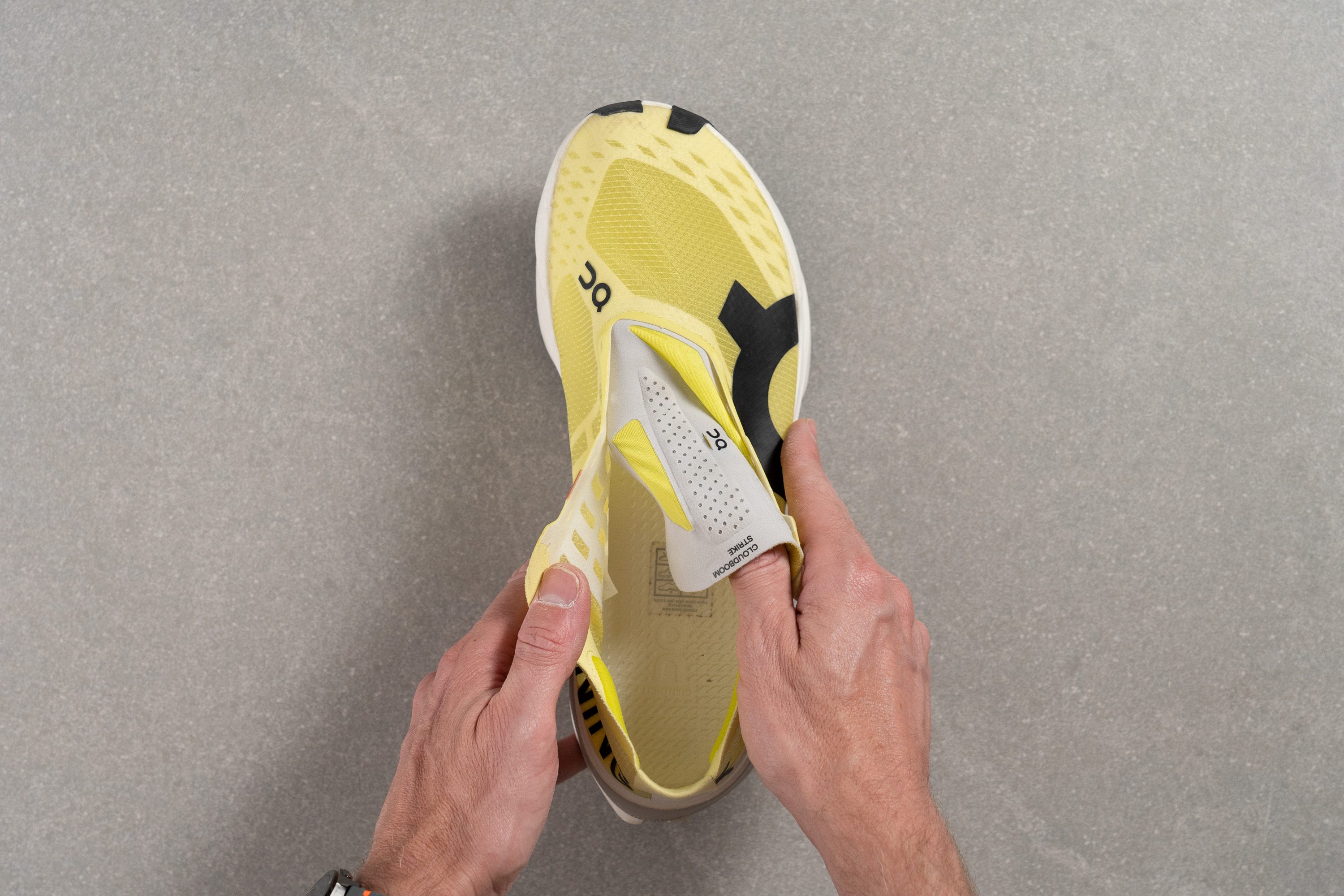
| Cloudboom Strike | None |
Price
The On Cloudboom Strike is priced on the higher side, even for a supershoe, though it remains a step below the most expensive competitors. Compared to its peers, we found that it’s not massively overpriced—it simply carries the usual On premium of 20 or 30 dollars, this time within the supershoe category.
| Cloudboom Strike | $280 |
| Average | $152 |
Heel tab
The heel includes a small pull tab for easier grip when needed.
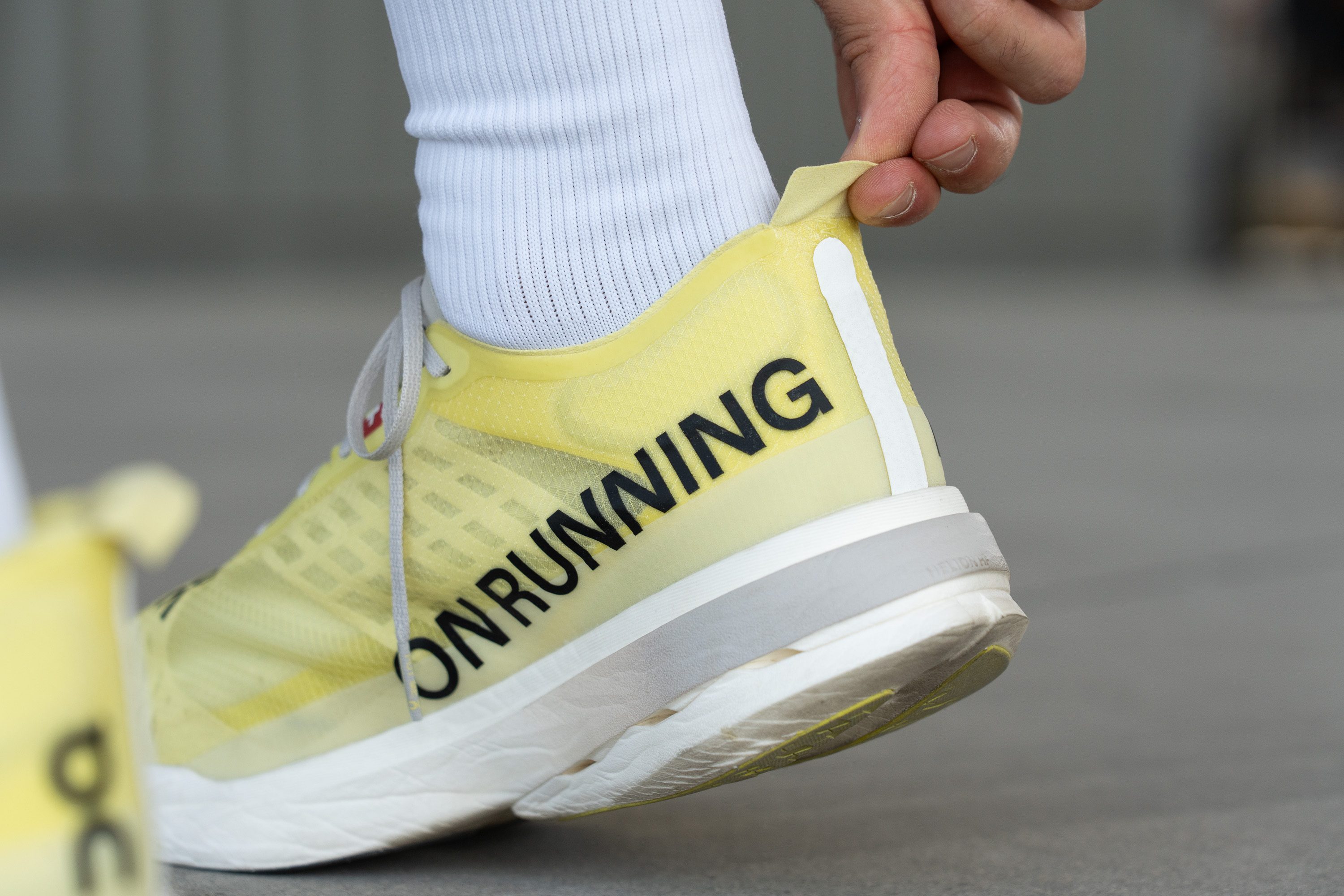
| Cloudboom Strike | Pull tab |



















































